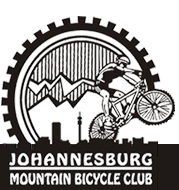Stitches and muscle cramps
Back to overviewMany mountain bike cyclists have experienced either muscle cramps or a “stitch” in their side during a race or hard climb on the trail, which affected their ability to stay with the pack or crest the hill in comfort.
Muscle cramps are painful, involuntary contractions caused by dehydration, electrolyte imbalance or inadequate supply of blood to the muscle. A “stitch” is a sharp pain or spasm in the upper side of your abdomen. Let’s explore some of the causes of these problems and what can be done during the ride to help you stay on the bike.
Stitch
The most widely accepted theory of the cause of a “stitch” is inadequate blood and oxygen supply to the muscles used in breathing the diaphragm and the muscles between the ribs.
During rest, blood flows primarily to the liver, stomach, kidneys, spleen and intestines. When you begin to go hard on the trail, there is a shift in the blood flow from these organs to the large working muscles of the legs. Because the adjustment in not immediate, some muscles are asked to meet the higher energy demands without adequate blood flow. At the beginning of a hard effort, breathing frequency and depth are increased, and the demands on the respiratory muscles can be severe. The lack of blood flow may produce the “stitch.”
If you get a “stitch” during a climb or hard effort try the following: Get in a safe place in the pack or the track and stretch the arm on your affected side over your head; blow out as hard as you can to empty air from your lungs; or dig your fingers into the affected area of your abdomen and massage it.
While these sound like wives’ tales, they will work for many of you. If they do not alleviate the pain you will just have to slow down to decrease your metabolic demand or stop riding altogether. If your “stitch” occurs regularly, it may indicate liver or gall bladder problems or a muscle pull and you should seek medical advice.
Muscle cramp
Another muscle problem that occurs during exercise is cramping. Fatigue is a key element in cramps since they most often occur after rigorous and repeated muscular activity. Cramps usually occur during hot weather, and the most common variety are called heat cramps. The body’s best way to fight heat is through sweating. Sweating, of course, results in water loss, plus a change in mineral and chemical balance.
These minerals (electrolytes) such as potassium and sodium are responsible for generating the electrical activity involved in muscle contractions and for restoring the muscle to resting state. You lose small amounts of electrolytes when you sweat, and it becomes difficult for your muscles to return to the resting state.
Water replacement is crucial and, in addition, you should include oranges, bananas and fresh vegetables in your diet; these are foods that contain high concentrations of electrolytes.
If during the ride you feel a muscle cramping up, you should forcefully stretch that muscle and its tendons. This will create tension on the tendons and activate sensitive nerve endings to inhibit further muscle contractions. This stretching technique is called reciprocal innervation. Every time you flex a muscle, the opposing muscle stretches to counterbalance it. If this were not the case, the muscles would contract against each other, as in an epileptic seizure.
For example, if there is a cramp in your calf muscle, put the corresponding pedal in the 6 o’clock position, drop the heel of the foot and massage the affected area to increase blood flow to the muscle. When a cramp occurs in the thigh muscle, take that leg out of the pedal and with one hand pull the foot up behind you toward the seat. Once again, make sure you are in a safe place on the trail before you try this move, or stop and stretch the thigh while standing. In all cases, dramatically increase your fluid intake.
Heat acclimatization should also be part of any training program. Increasing vigorous activity in a hot environment will prepare you body for the heat stress of the real competition. As a final precaution, avoid heavy meals before competition or a hard ride. In fact, the pre-ride meal should be finished more than two hours before the ridee.
